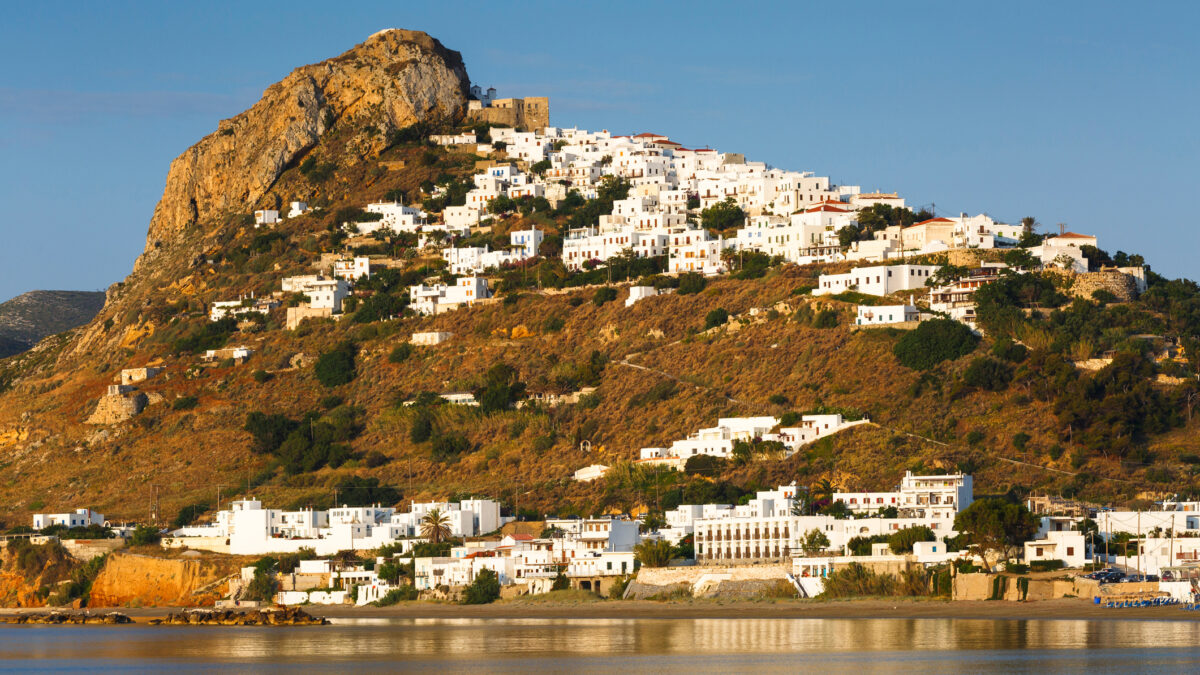Skyros is the southernmost and largest island in the Northern Sporades and is located a short distance from eastern Evia. On its northern side, the island boasts verdant landscapes blanketed in pine forests, while its southern side is more reminiscent of southern Evia and the Cyclades. Skyros represents a quieter side of the Aegean, offering itself as a peaceful destination for visitors in search of authentic excursions. The dense pine forests in the island’s north fit perfectly with the whitewashed houses built according to the famous local architectural style, the winding alleyways of its Cycladic-style Chora and the barren South. Here, unspoilt beaches sit side by side with archaeological findings and museums that evidence an extensive history. The Archaeological Site of Palamari, where visitors can admire artefacts from the Bronze Age, is well worth the visit, as is the local castle, which offers striking views of the surrounding landscape and a few remnants of the ancient Acropolis of King Lycomedes. Visitors are sure to be charmed by the gorgeous church of Agios Georgios, and the island is dotted with other small churches and monasteries such as Agios Nikolaos at Pouria, an emblematic example of rock-cut architecture. The island’s history is prominently displayed in both the Archaeological Museum and the Faltaits Folklore & Ethnological Museum. Skyros also boasts a number of fascinating hiking trails. One of them, easy and short, will lead you to the idyllic Agalipa beach – considered one of the most beautiful on the island – and the shipwreck of the same name.
Skyros is also known for its diminutive indigenous horses, local embroidery, woodcarving and furniture-making crafts, and carnival customs.
Cuisine
The island’s diverse geography gives rise to an equally diverse array of local products.
An ideal place to start exploring the cuisine of Skyros is with its most famous food. Skyros is famous for its excellent lobster: visitors are sure to find the island’s lobster pasta exceptionally tasty and unlike any other in the world. As for meat, the island’s goat and lamb are worth a taste.
Skyros also produces excellent honey. The local thyme honey has high nutritional value and is produced in large quantities thanks to the prevalence of thyme on the island. Skyros also produces honey from pine and heather. The local grape molasses, made from grape must, is also abundant and of exceptional quality. Fava (Lathyrus clymenum) stands out among the locally grown legumes.
Pies also play a major role in the island’s cuisine: local specialties include ladopita, made with the island’s excellent honey, and trahanas pie. As for sweets, Skyros is known for its loukoumades topped with local honey, and its almond sweets. Skyros also boasts a cheese-making tradition, producing excellent myzithra, xinotyri, feta and graviera. Finally, Skyros also produces wines. Organised wineries scattered throughout the island utilise the grape varieties grown here to produce wines readily available for purchase.
How to get there
Skyros is an island in the Northern Sporades. It is serviced by ferry from Kymi on Evia and by air.










